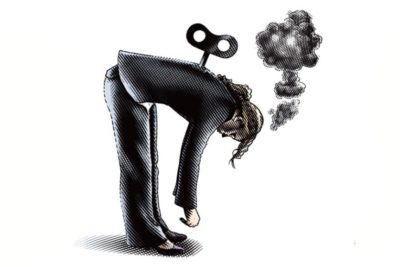World Health Organization Declares ‘Workplace Burnout’ a Disease. The Cure? Mindfulness
It’s no secret that today’s workplace can be stressful. So much so that workplace burnout has now been classified as a disease that can affect any employee in any company. To help improve the work environment, many organizations are introducing mindfulness. Access to this simple, but effective practice helps employees become more present and aware of their environment and coworkers. Starting each day with a breathing exercise, noting without reacting, pausing during the day and bringing mindfulness into conversations can all help transform the workplace into a place of positivity and productivity. Read more.
How to Work Smarter, Not Harder
While many entrepreneurs brag about having sacrificed sleep, free time and more to bring their companies to life, the data is clear on the cost of working harder, not smarter. Employees who work more than 40 to 50 hours a week are two-thirds less productive. And they are also unhappy. It’s up to leadership to protect their team members from burnout and the resulting disengagement. Expectations come from the top down. Make sure that employees aren’t taking on — or being assigned — more than they can handle. The first step towards helping employees work smarter is creating a culture that values well-being over productivity. Read more.
How to Work Less And Achieve More
The average 40-hour employee spends more like 47 hours at work, and salaried employees 49 hours. Even when employees are off, they take phone calls or respond to a steady flow of texts and emails. However, it turns out that working more doesn’t result in a better performance after 50 hours. The key is to work smarter by being selective about which activities to focus on. Leaders can help their employees work smarter by not only communicating clearly about priorities and expectations but also inspiring them through example. Engaged employees want to — and do — perform better. Read more.
Businesses today must remain innovative to stay relevant. That means leaders must find ways to improve their innovation power. The only way to do that is to maintain a healthy immune system, which just like the body’s immune system, will keep the organization healthy and stable. Individual, organizational and societal immune systems all affect how employees, companies and societies can innovate. A study showed that 76 percent of managers didn’t believe their companies had the capabilities to innovate and move into the future. Changing how companies measure and reward employees can help foster a culture of innovation and risk taking. Read more. Most organizations set objectives and key results. Those performance measures are typically viewed as targets. The assumption is an employee’s performance will improve if he or she hits that target. But that’s not how it works. Better results come from working together on a meaningful goal, not from trying to reach an arbitrary target such as doubling sales. In fact, arbitrary targets can lead to a distortion of the numbers or system. Only in the best of cases do they result in an improved system. Rather than simply judging performance based on targets, effective managers should look at how they can be a coach or facilitator to help their employees improve. Read more.
3 Ways to Improve Your Innovation Power

Measures Matter, but Make Sure Your Success is Real, not Fake




